Birds of prey, Meet the Top 10 Largest Birds of Prey in the World! Raptors are fascinating predators with keen eyesight, strong talons, and powerful beaks. These incredible birds have evolved to dominate the skies and hunt a variety of prey.
From majestic eagles to formidable vultures, the world is home to a diverse array of these incredible avian hunters. In this article, we will explore the top 10 largest birds of prey, along with key information about each species.
1. Andean Condor (Vultur gryphus)

With a wingspan that can reach up to a mind-boggling 10 feet, the Andean Condor reigns supreme as the king of all soaring birds. This South American giant boasts a distinctive appearance with its black plumage and majestic white collar. Imagine standing beside this avian marvel and feeling the wind rustle through its awe-inspiring feathers, making you realize just how small we humans can be in comparison. Fun fact: Despite their massive wings, Andean Condors are experts at gliding for hours, using warm updrafts to effortlessly navigate the skies.
- Length: Up to 4.3 feet (1.3 meters)
- Wingspan: Up to 10.5 feet (3.2 meters)
- Weight: 20-33 pounds (9-15 kg)
- Habitat: South America
The Andean Condor holds the record for the world’s largest wingspan, making it an awe-inspiring sight as it soars through the skies of the Andes mountains. Despite its massive size, the Andean Condor is remarkably graceful in flight.
2. California Condor (Gymnogyps californianus)

The California Condor has a wingspan that’s equally jaw-dropping, making it one of the largest flying birds on the planet. However, its journey hasn’t been all smooth soaring. With a dwindling population that led to its classification as critically endangered, conservation efforts stepped in to save the day. Thanks to determined humans, these incredible birds are making a comeback. Picture witnessing a California Condor majestically reclaiming the skies it nearly lost forever – it’s a true testament to the power of conservation!
- Length: About 3.5 feet (1.1 meters)
- Wingspan: Around 9.5 feet (2.9 meters)
- Weight: 18-31 pounds (8-14 kg)
- Habitat: Western North America
The California Condor is a critically endangered species and one of the rarest birds in the world. Efforts to save this species have involved captive breeding and release programs, aiming to increase their population and ensure their survival.
3. Philippine Eagle (Pithecophaga jefferyi)
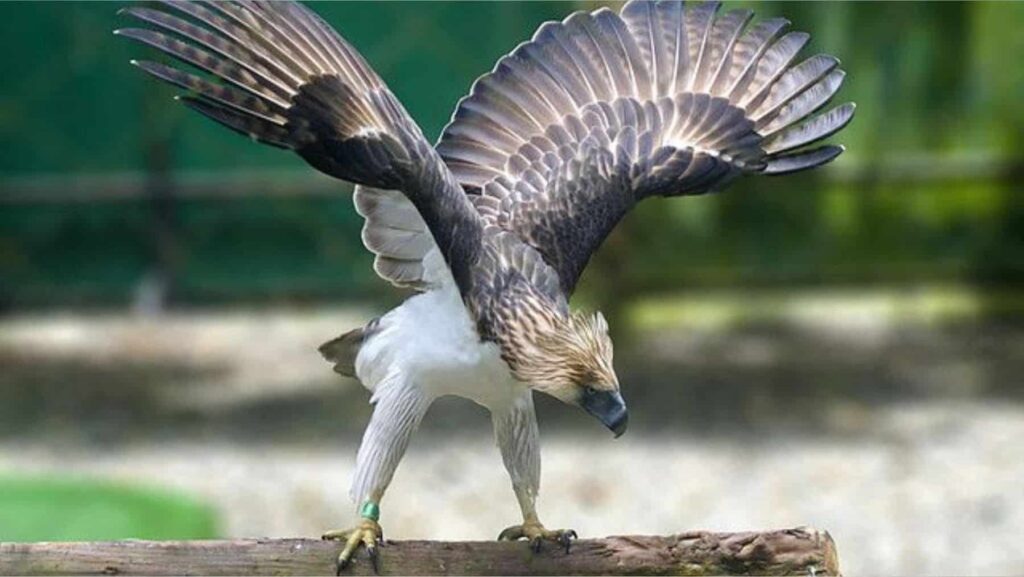
Found exclusively in the Philippines, the aptly named Philippine Eagle boasts a remarkable wingspan that’s a true testament to its mastery of the skies. Known for its striking appearance, the eagle’s crown of feathers gives it a regal and unmistakable aura. Imagine standing beneath the canopy of dense rainforest, hearing the distinctive call of this magnificent bird echoing through the trees.
- Length: Approximately 3.3 feet (1 meter)
- Wingspan: Up to 6.7 feet (2.05 meters)
- Weight: 12-18 pounds (5.4-8.2 kg)
- Habitat: Philippines
The Philippine Eagle is one of the world’s largest and most unique eagles. Found only in the Philippines, it is an important cultural and ecological symbol for the country.
4. Steller’s Sea Eagle (Haliaeetus pelagicus)

Venturing into the northern territories, we encounter the Steller’s Sea Eagle. Imagine the breathtaking sight of this magnificent bird perched on a snow-covered tree, its distinctive white head and powerful beak setting it apart. This eagle’s massive size and striking appearance make it a true marvel. It’s no surprise that it’s often referred to as the “king of birds” in its native habitat.
- Length: About 3.6 feet (1.1 meters)
- Wingspan: Up to 8.2 feet (2.5 meters)
- Weight: 15-20 pounds (6.8-9.1 kg)
- Habitat: Far East Russia, Japan
Steller’s Sea Eagle is known for its distinctive white plumage and impressive size. It primarily inhabits coastal areas and feeds on fish and other aquatic prey.
5. Harpy Eagle (Harpia harpyja)
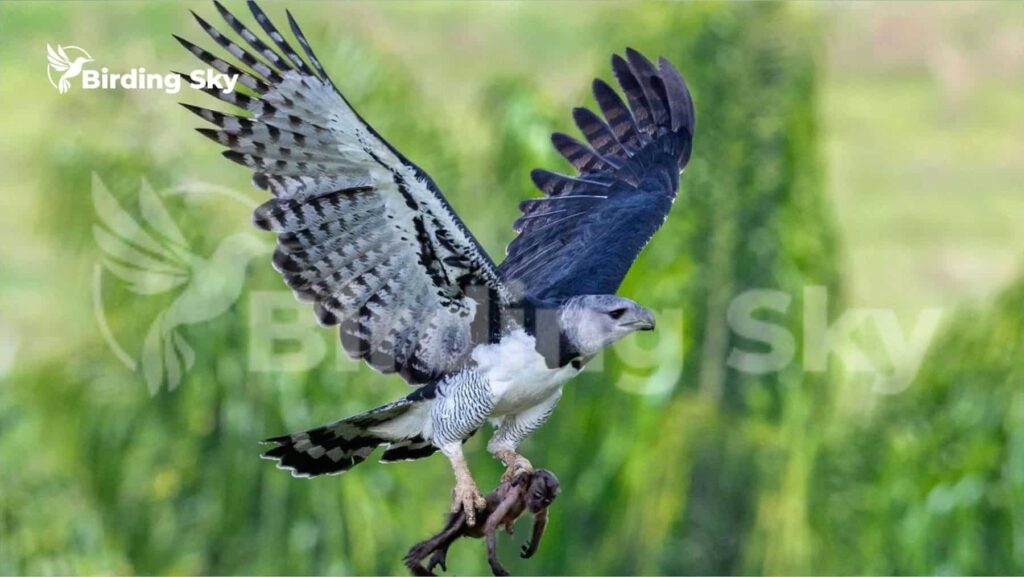
Heading south to the lush rainforests of Central and South America, we discover the Harpy Eagle. This fierce predator is a symbol of power in various indigenous cultures. With its strong, talon-tipped feet and piercing gaze, the Harpy Eagle is perfectly adapted for life amongst the treetops. How would it feel to spot this majestic hunter during one of its stealthy forays through the jungle?
- Length: Approximately 3.3 feet (1 meter)
- Wingspan: Up to 6.5 feet (2 meters)
- Weight: 13-20 pounds (6-9 kg)
- Habitat: Central and South America
The Harpy Eagle’s striking appearance, with its large size and prominent crown of feathers, has earned it the nickname “American Harpy Eagle.” It is a powerful predator in the rainforests it calls home.
6. Bald Eagle (Haliaeetus leucocephalus)
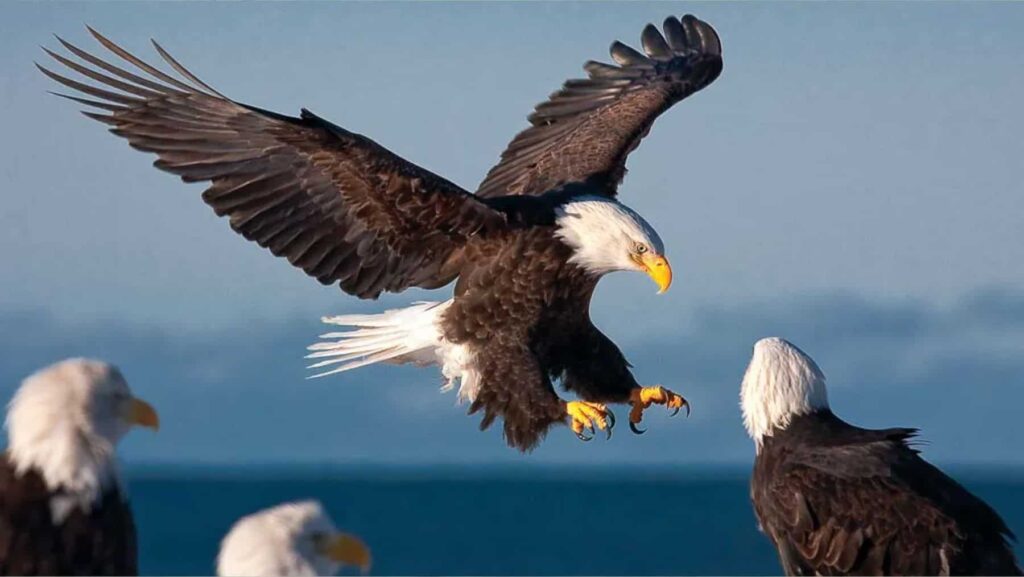
No list of magnificent birds of prey would be complete without the iconic Bald Eagle. As the national emblem of the United States, this bird symbolizes strength, freedom, and resilience. With its characteristic white head and tail, the Bald Eagle commands attention wherever it goes. Imagine spotting one perched atop a towering tree near a tranquil lake, a true embodiment of natural majesty.
- Length: Around 2.5 to 3 feet (0.76-0.91 meters)
- Wingspan: 6.5 to 7.5 feet (1.98-2.29 meters)
- Weight: 6.5-14 pounds (3-6.3 kg)
- Habitat: North America
The iconic Bald Eagle is not only the national bird and symbol of the United States but also a well-known raptor across North America. It is often associated with strength and freedom.
7. White-tailed Eagle (Haliaeetus albicilla)
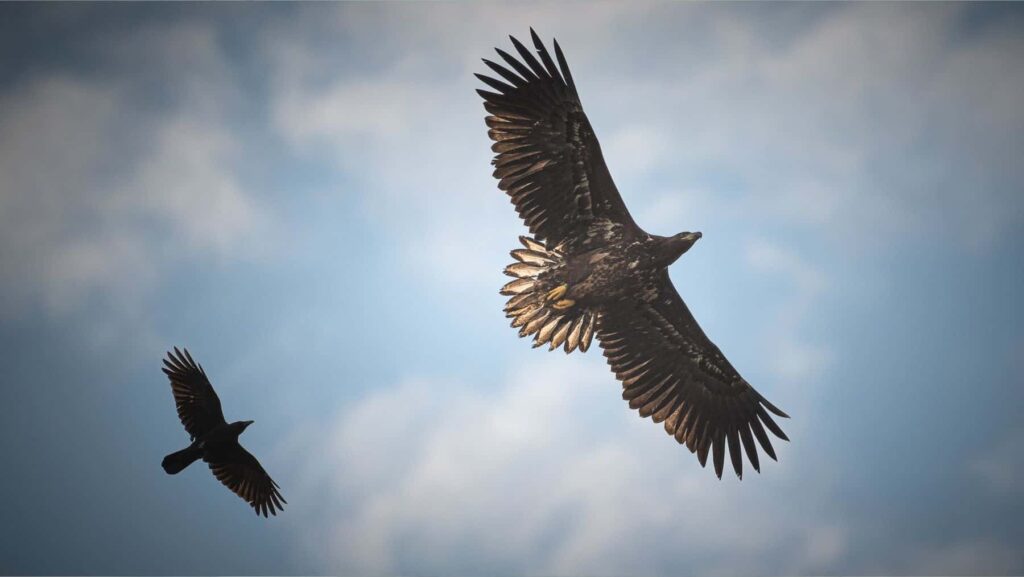
Our final stop takes us to the shores of Europe, where the White-Tailed Sea Eagle patrols the coastal regions. With a wingspan that makes it an apex predator in its environment, this eagle is a true sentinel of the sea. Picture watching this majestic bird effortlessly snatch fish from the water’s surface, a seamless display of hunting prowess.
- Length: Approximately 2.6 to 3.3 feet (0.8-1 meter)
- Wingspan: Up to 8 feet (2.45 meters)
- Weight: 7-14 pounds (3.2-6.3 kg)
- Habitat: Europe, Asia, Northern Africa
The White-tailed Eagle is the largest eagle in Europe and has a distinctive appearance with its white tail feathers contrasting against its dark body.
8. Cinereous Vulture (Aegypius monachus)
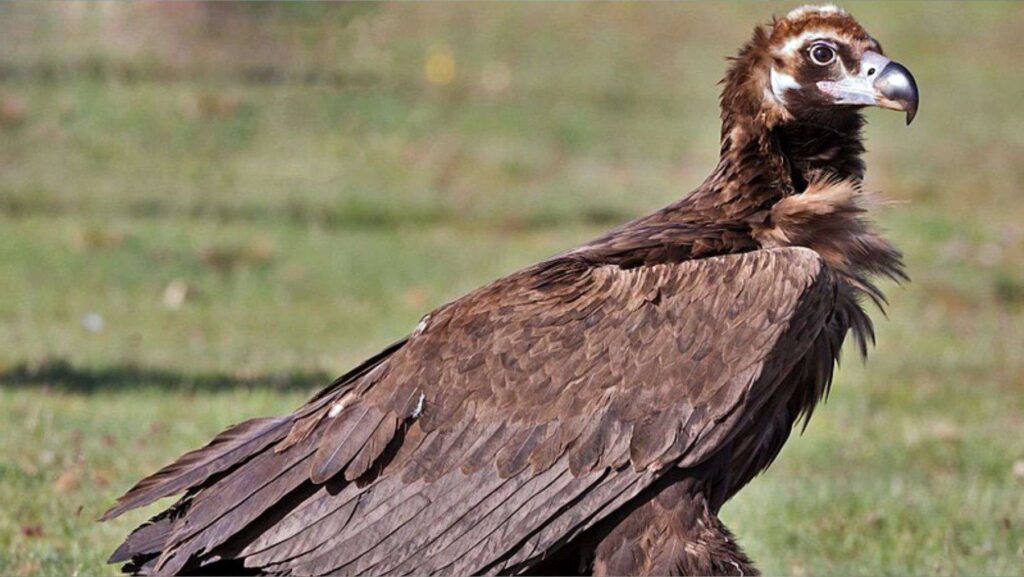
As we traverse the vast expanse of Eurasia, the Cinereous Vulture captures our attention. With a wingspan that rivals that of the Andean Condor, this vulture is an aerial marvel. Picture the surreal scene of a Cinereous Vulture gracefully gliding over the European steppes, riding the wind currents with effortless elegance.
- Length: Around 3.3 to 3.8 feet (1-1.16 meters)
- Wingspan: Up to 9.5 feet (2.9 meters)
- Weight: 15-31 pounds (6.8-14 kg)
- Habitat: Europe, Asia
The Cinereous Vulture, also known as the Eurasian Black Vulture, is a large and impressive scavenger that plays a vital role in maintaining healthy ecosystems by cleaning up carrion.
9. Bearded Vulture (Gypaetus barbatus)
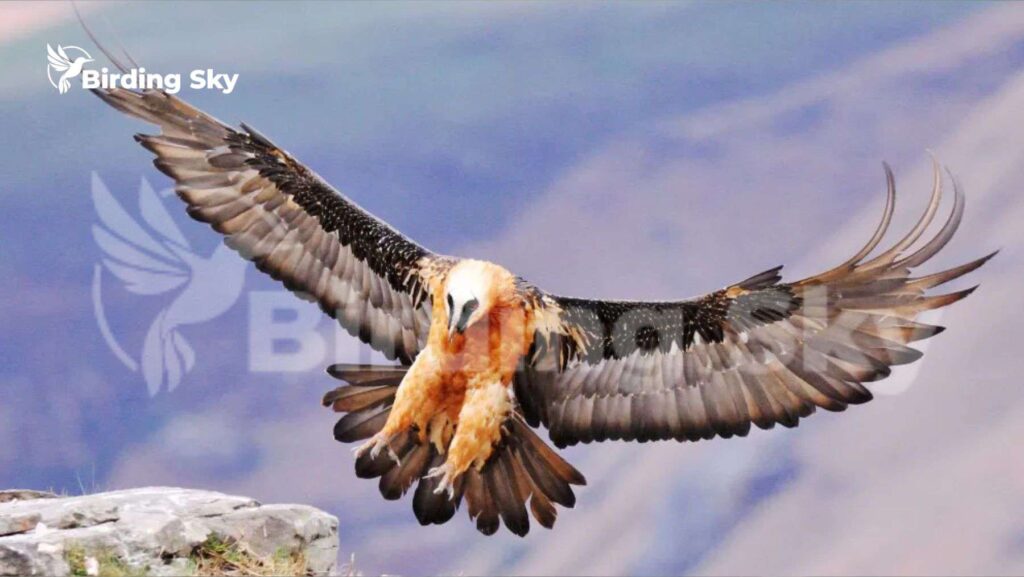
Rounding out our list is the Bearded Vulture, a high-altitude specialist found in the mountains of Europe, Asia, and Africa. With a wingspan reaching over 9 feet, this vulture is known for its unique feeding habits—it dines on bones! By dropping them from great heights to break them apart, the Bearded Vulture demonstrates ingenuity that’s hard to match in the animal kingdom.
- Length: Approximately 3.3 to 4.3 feet (1-1.3 meters)
- Wingspan: Up to 9.8 feet (3 meters)
- Weight: 11-17 pounds (5-7.7 kg)
- Habitat: Europe, Asia, Africa
The Bearded Vulture is known for its unique diet, which includes bones. It drops bones from heights to break them and access the marrow, demonstrating remarkable adaptability.
10. Griffon Vulture (Gyps fulvus)

Roaming the skies above Europe, Africa, and Asia, the Griffon Vulture plays a crucial role in maintaining the balance of nature. Its wingspan, which can approach 10 feet, allows it to cover vast distances in search of carrion. Despite its imposing appearance, it’s a vital member of its ecosystem, preventing the spread of disease by cleaning up after nature’s course.
- Length: About 2.7 to 3.1 feet (0.82-0.94 meters)
- Wingspan: Up to 9.5 feet (2.9 meters)
- Weight: 15-26 pounds (6.8-11.8 kg)
- Habitat: Europe, Africa, Asia
The Griffon Vulture is one of the Old World vultures and is often seen soaring in groups, utilizing thermal updrafts to effortlessly cover vast distances in search of food.
These magnificent birds of prey showcase the diversity of adaptations that have allowed them to conquer the skies and thrive in various ecosystems. Each species plays a unique role in maintaining the balance of their respective habitats, making them not only awe-inspiring but essential components of the natural world.
Final Thoughts:
From the enchanting rainforests to the rugged mountains and the expansive savannas, these top 10 largest birds of prey remind us of the diverse beauty and adaptability of the natural world. Their impressive sizes and unique characteristics have captured our imagination for generations, inspiring awe and reverence for the majesty of nature. As we continue to explore and appreciate these magnificent creatures, we find ourselves connected to the delicate tapestry of life that they so gracefully navigate.
FAQs:
Q1: What is the second largest bird of prey?
The Andean Condor takes the crown as the second largest bird of prey. With its astonishing wingspan of up to 11 feet, this majestic creature soars over the South American mountain ranges, captivating our imagination with its impressive size and graceful flight.
Q2: What is the largest and strongest bird of prey?
The Harpy Eagle claims the title of both the largest and one of the strongest birds of prey. This regal raptor, found in the rainforests of Central and South America, showcases a wingspan of up to 7 feet and unparalleled hunting prowess, making it a true powerhouse in the avian world.
Q3: What is the 2nd largest bird in the world?
The second largest bird in the world is the Emu. Native to Australia, this flightless bird boasts an impressive stature, standing up to 6.2 feet tall. While it might not take to the skies, its uniqueness and size are undeniable.
